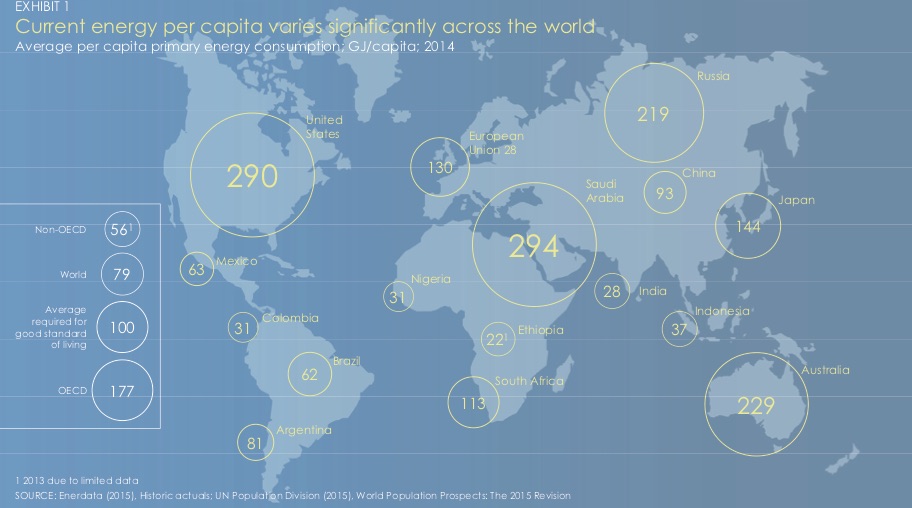.jpg)
There's a very good chance that you and your family have enjoyed the pleasure of a theme park. Maybe it was DisneyWorld or DisneyLand, or possible Universal Studios, or something else. Did you ever wonder about who dreamed up the idea of a theme park?
It was Walt Disney back around 1955. What's particularly interesting is how he came up with the idea. In fact, Disney combined three old ideas: 1) the fairy tale, a la Brothers Grimm; 2) animation, first developed by the French filmmaker Georges Melies; and 3) the idea of an ornamental garden, first found in ancient Egypt and Arabia.
That same type of Disneyesque thinking is now being applied to improving solar power technology. In this case, it's another combination of three old ideas/technologies: 1) perovskite, a type of mineral; 2) printing; and 3) solar power. The combination of these three disparate technologies could lead important innovation, even revolution, in how we do solar power. Gustav Rose discovered perovskite in the Ural Mountains of Russia in 1839, then named it after Russian mineralogist L.A. Perovski. It's been used in various ways since the discovery, but most recently has been considered for its potential in solar panels. Perovskite has a theoretical efficiency limit of 33%, greater than the 29% theoretical efficiency limit for silicon in solar panels. One of the leaders in investigating perovskite in solar panels is Oxford PV, a 2010 spinout of Oxford University in the United Kingdom. In December, 2018, Oxford PV managed to obtain 28% efficiency from perovskite.
The second part of the innovation is applying printing to the process of creating solar cells. A group called the Victorian Organic Solar Cell (VICOSC) Consortium in Australia has been working on this. VICOSC is a research collaboration between the Commonwealth Scientific and Industrial Research Organization (CSIRO), Monash University, the University of Melbourne, BlueScope Steel, Innovia Films, Innovia Security and Robert Bosch Southeast Asia. It has received funding both from the Victorian State Government and the Australian Government's Australian Renewable Energy Agency.
Reports are that flexible solar panels can be printed using conventional print technologies such as screen print, reverse gravure coating, and slot die coating of the perovskite.
The Australians have created a roll-to-roll printing line that has successfully fabricated 30 centimeter wide (approximately 11.7 inches) rolls that can be cut to various lengths.
The printed sheets containing perovskite didn't achieve the level of efficiency obtained by Oxford PV in December, 2018, but it was still a respectable 19%. The researchers have made significant progress. Just three years ago they were only able to "print" cells the size of a fingernail, but now can create cells 30 centimeters wide. The printer can produce up to 10 meters of the 30 centimeter wide web in a minute. CSIRO materials scientist Dr. Scott Watkins noted, "There are so many things we can do with cells this size. We can set them into advertising signage, powering lights and other interactive elements. We can even embed them into laptop cases to provide backup power for the machine inside."
The technology is based upon conventional screen printing. The printed T-shirt that you're either wearing, or have sitting in your dresser at home, was likely printed using a similar screen printing technique. The current Australian prototype printer costs about $ 200,000, but the cost will likely decrease as the technology improves. While it might seem like it, this type of printing is not rocket science.
Just as current techniques permit one to "screen print" onto steel and similar materials, VICOSC project coordinator and University of Melbourne researcher Dr. David Jones says that "we'll be able to embed these cells onto roofing materials."
Screen printed flexible solar panels should reduce the cost of, and increase the range of applications, of solar panels. But a related technology – 3D printing, also known as additive manufacturing – could also lead to a better way to produce solar power, in this case, concentrated solar power. Another group in Australia – the Australian Solar Thermal Research Initiative (ASTRI) – is working on this.
Concentrated solar power is actually a very old idea. Legend has it that in the 3rd century BC, Archimedes used mirrors to focus sunlight and burn an enemy ship. In the 1880's, some enterprising souls placed reflective dishes or troughs outdoors to collect and concentrate sunshine to run presses and motors. Early in the 20th century it was used to run irrigation system in Egypt. The technology worked, but as cheap fossil fuel power became more widely available, it supplanted these early concentrated solar systems.
ASTRI is an 8 year, $ 87 million research initiative to develop concentrated solar power. It's collaborating with the US Department of Energy's National Renewable Energy Laboratory. The modern version of this technology is to create a giant circular array of mirrors, each designed to reflect sunlight onto a fixed point in the center of the array. The concentrated sunlight then heats a molten salt, or similar liquid. While a solar panel converts sunlight into electricity, the concentrated solar system merely stores to energy of the Sun in the molten salt. When needed, the energy is then converted into electricity.
This approach has the advantage of permitting the storage of energy for when it's needed. One of the biggest drawbacks of solar panels is that they can only be used when the Sun is shining. It it's dark outside, the solar panels cannot function. Conversely, with a concentrated solar power system, the energy gathered while the Sun is shining can be stored until nighttime, then used to power the grid.
3D printing is already being used by Sandia Laboratories to produce various types and designs of solar power concentrators. According to 3dprint.com, "The [Sandia] team created several prototype receivers at its National Solar Thermal Testing Facility, and tested their ability to absorb sunlight that can be used to generate electricity while withstanding high pressures and temperatures. The facility aims rows of mirror-likeheliostats, which reflect and concentrate sunlight, at a central receiver on top of a tall building; the receiver absorbs the heat from the sun and transfers it to gas that flows through its paneling, which can either be stored or used immediately to produce electricity. Various 3D printed prototype receiver designs were scaled in size, to see which one would work best for small and medium-scale concentrating solar facilities. The designs can be paired with other media for heat transfer and storage, and work well with conventional heat-transfer fluids for concentrating solar power.
3D printing, in the Sandia case, facilitated rapid prototyping of complex designs. Using the 3D printer was faster and less expensive than more conventional prototyping methods. In the future, it may be possible to 3D print much larger assemblies for bigger concentrated solar power systems.
While the two approaches described here represent two totally different types of printing – screen printing in one case and 3D printing in the other case – they share in common the idea of creating new and different substrates to generate solar power. They also represent the idea that invention is the result of combining existing ideas in new and novel ways: a way to get from Grimm's fairy tales, animation, and ornamental gardens all the way to DisneyWorld. In the case of solar power, it holds the promise of continuous technological improvement through combination and improvisation. Sounds very much like something that Walt Disney would recognize.








